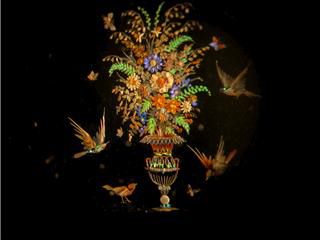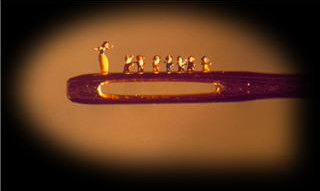The Library of Congress has approved funding for preservation of what has been dubbed the “digital game canon,” a founding list of 10 canonical video games – including two that were developed by MIT students more than 25 years ago. The fledgling digital game archive is part of the “Preserving Virtual Worlds” project that the
Library of Congress last month awarded $590,000 under its “Preserving Creative America” initiative. The grant funds two years of preservation work by four American colleges and one game developer, slated to begin at the start of 2008.
The
“Preserving Virtual Worlds” project, as
I’ve noted in the past, is another sign marking a shift in our view of digital games: that we are beginning to seeing them not just as raw entertainment but as innovative art, much the way major film, television and comic books have come to be seen as art.
The “Preserving Vitual Worlds” project is a joint effort of the University of Illinois, Stanford University, the University of Maryland, Rochester Institute of Technology and Linden Lab (the makers of "Second Life"). Stanford, Illinois and Maryland will provide matching funds. The project aims to develop methods for archiving digital games, electronic literature and virtual worlds like “Second Life,” and to begin preserving examples of each by the end of the project’s two years.
Stanford University professor and curator
Henry Lowood and associates proposed the initial list for the digital games canon during a panel discussion at the Game Developers Conference in San Francisco in March. They modeled it on the National Film Preservation Board’s annual selection of films to be added to the National Film Registry. Their slate of 10 games, which are now expected to be archived in the “Preserving Virtual Worlds” project, include “Spacewar!” (1962) and “Zork” (1980), which were developed at MIT, as well as “Star Raiders” (1979), “Tetris” (1985), “SimCity” (1989), “Super Mario Bros. 3” (1990), “Civilization I/II” (1991), “Doom” (1993), the “Warcraft” series (beginning 1994) and “Sensible World of Soccer” (1994).
The archiving project will include figuring out what data needs preserved, how to preserve it and what components beyond the data someone in the future might need to experience the game in a manner simulating its original form. Lowood, the curator of history of science and technology collections at Stanford, says they hope to get much of this preparatory work done during the project’s first year and preserve examples of digital games and electronic literature by the end of the two years. Preserving “Second Life” is expected to be more complicated, but Lowood says they hope to preserve some islands of the game by the end of the second year to demonstrate how it might be done.
Another key aspect of the project will be addressing the legal issues of preserving these digital works, and how much public access to the archive will be feasible without infringing upon the developers’ and manufacturers’ rights. Lowood says ideally they would seek to provide full public access – even Web access – to the preserved works, but legal constraints may limit archives of the digital works only to institutions that own physical copes of them.
Lowood says the Library of Congress funding shows that the federal institution has “recognized that right now very little has been done to make sure people have access” to these works in the future. “There’s a real danger that all this stuff will disappear and no one will be able to investigate the cultural history of this period.”
In the meantime, Lowood and company are assembling a list of a second 10 key games in need of preservation, the “digital game canon II,” which they hope to announce at the 2008 Game Developers Conference in San Francisco in February.
Related: Check out Lowood's fun blog post about
“Teaching in ‘World of Warcraft.’”














